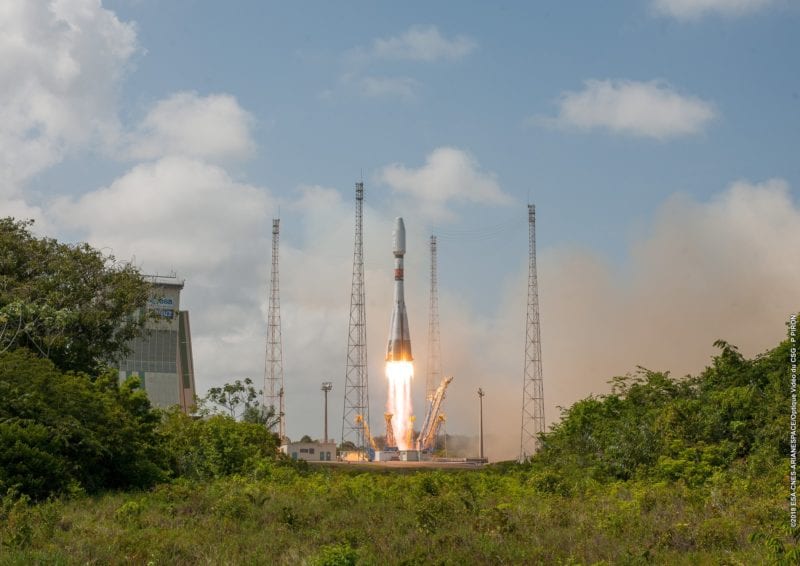Latest News

Arianespace’s Soyuz rocket lifting off from Guiana Space Center on Dec. 19. Photo: Arianespace
For its 11th and final launch of the year, Arianespace‘s Soyuz medium-lift launcher lifted off from Guiana Space Center (CSG) in French Guiana at 1:37 p.m. local time today. Arianespace successfully orbited the CSO-1 military Earth observation satellite for the French National Center for Space Studies (CNES) and the French Government Defense procurement agency (DGA) on behalf of the French Ministry of Defense.
CSO-1 was placed in a Sun-synchronous orbit at an altitude of 800 kilometers and will acquire 3D pictures and very-high-resolution images in the visible and infrared bandwidths. CSO-1 is the first satellite of the Optical Space Component (CSO) program, comprising a constellation of three new-generation satellites for the French Ministry of Defense. They will carry out two different missions: reconnaissance for CSO-1 and CSO-3, and identification for CSO-2. As the successor to the Helios 1 and 2 systems, CSO aims to address France and Europe’s operational needs for global intelligence and strategic surveillance, knowledge of the geographic environment, and support for operational deployments.
Airbus Defense and Space France is prime contractor for the satellites, while Thales Alenia Space France is supplying the optical imaging instrument. After the Helios 1 and 2 satellites (the first and second generation of military observation satellites), the third-generation CSO spacecraft will be accessible to European partners through bilateral agreements with France as part of the Multinational Space-based Imaging System for Surveillance, Reconnaissance, and Observation (MUSIS) program. Germany, Sweden and Belgium already have joined the CSO user community, and an agreement with Italy will be signed shortly.
Get the latest Via Satellite news!
Subscribe Now